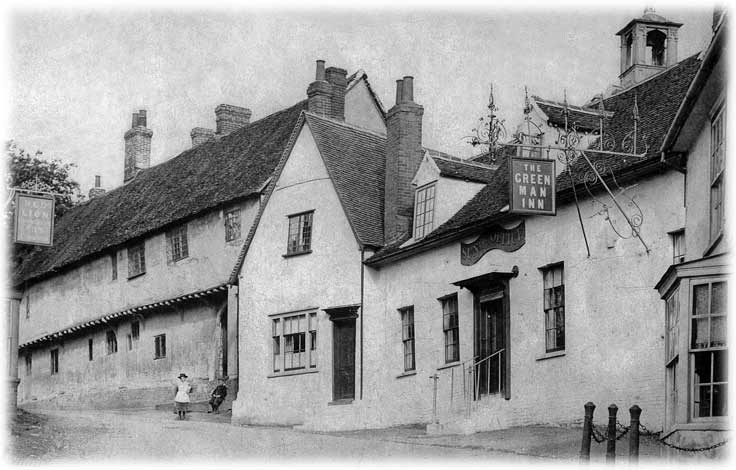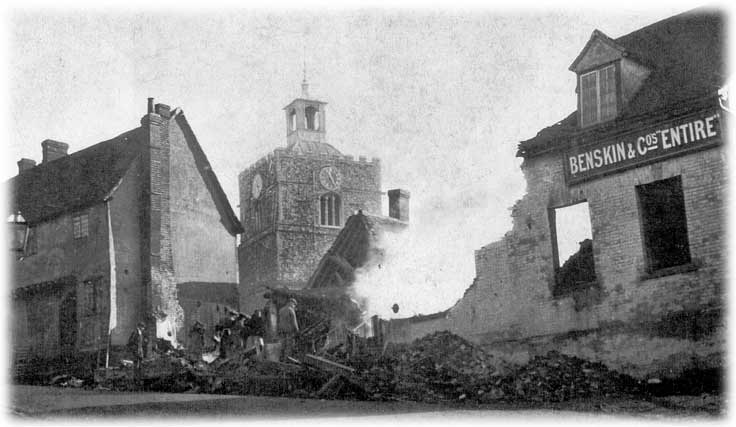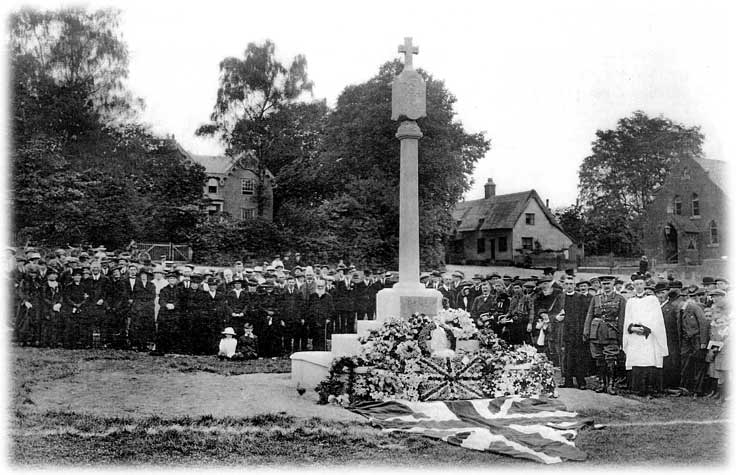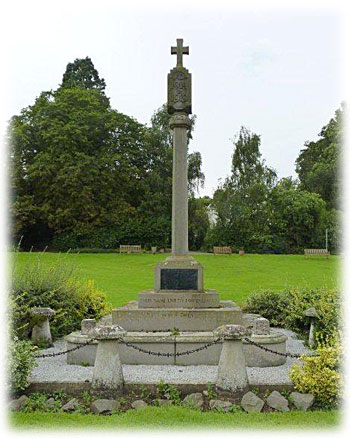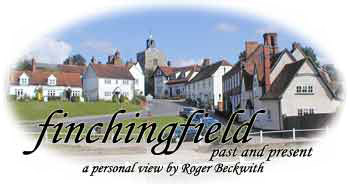The Green Man public house in the early years of the
20th century. Beside it can be seen the Guildhall. A fire in 1905 destroyed
the pub. The fire was attended by engines from the village and nearby Wethersfield
and the 15th century Guildhall was saved. The curvy sign above the pub door
tells us that, by a strange chance, the building also served as the local
office for the Sun Insurance Company.
Here's the scene the day after the fire; the ruins are
still smoking. In earlier times the pub was known as the Bell Inn - it is
thought that the church bells were cast on this site. A document from 1740
refers to the Bell Inn, another from 1782 shows that the name had changed
by then. The Green Man name comes from a person, dressed all in green, who
travelled around the countryside selling herbal medicines. After the fire
a new Green Man was built. It was much later renamed The Finch and has now
been converted into a private dwelling. It can be seen on the '
hostelries'
page.
This picture shows the service of dedication of the War Memorial by The Reverend
Harry Jordan and Major General Sir Harold Goodeve Ruggles Brise, K.C.M.G.,
C.B., C.V.O. The date was 27th June 1920. The memorial was designed by Arthur
Legge, R.B.A. and cost £268:14s:2d.
The following names appear on the memorial,
first from the 1914-18 war: Alfred Allen, William Adams, George H. Broyd,
Portor Choat, Leonard Gowlett, Tom Juniper, George Kemp, Robert Linsell, Ernest
Mickley, Harry Martin, John E. Overall, Ernest Purkiss, Tom Purkiss, Walter
Ralling, John Suckling, Arthur Shead, Harry Stock, Harold Sullen, William
Sullen, Sidney Smoothy, William Sains, Ernest Turpin, George Townsend, Harry
Townsend, Alfred Underwood, Percy Wiffen and Albert Wood. And from the 1939-1945
war: J. H. H. Copeman, B. C. Gilbanks, T. O. Ruggles-Brise, L. Taylor, W.
M. Webb and F. Willingham.
Thanks to Ron Hawkins for supplying the old photos on this page. The colour
shot shows the memorial in 2012, photographed by Kathy Martin.
